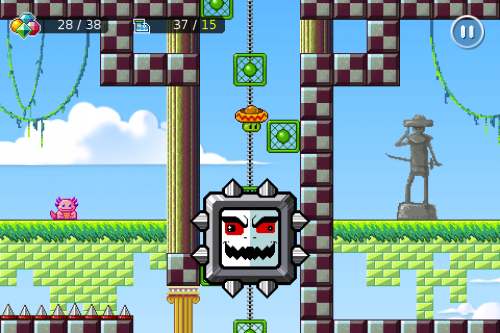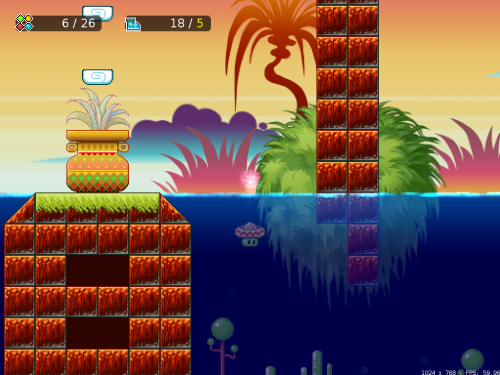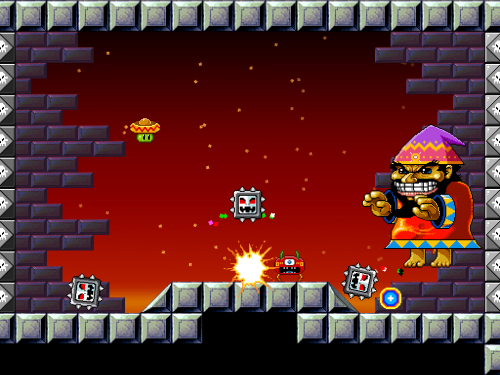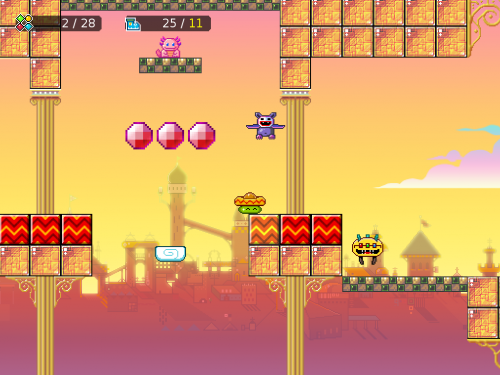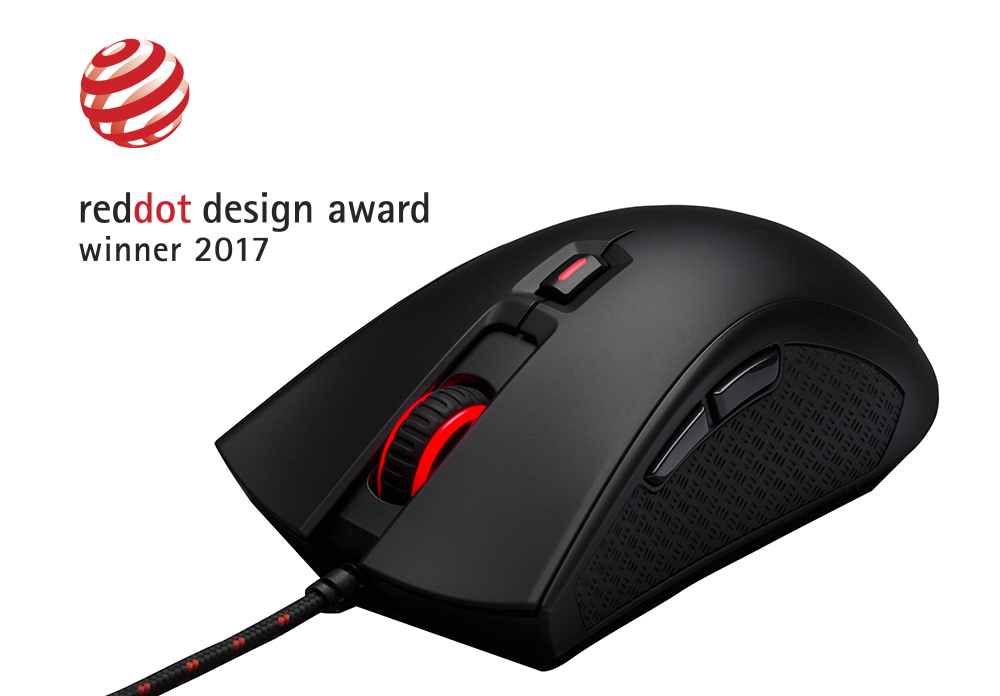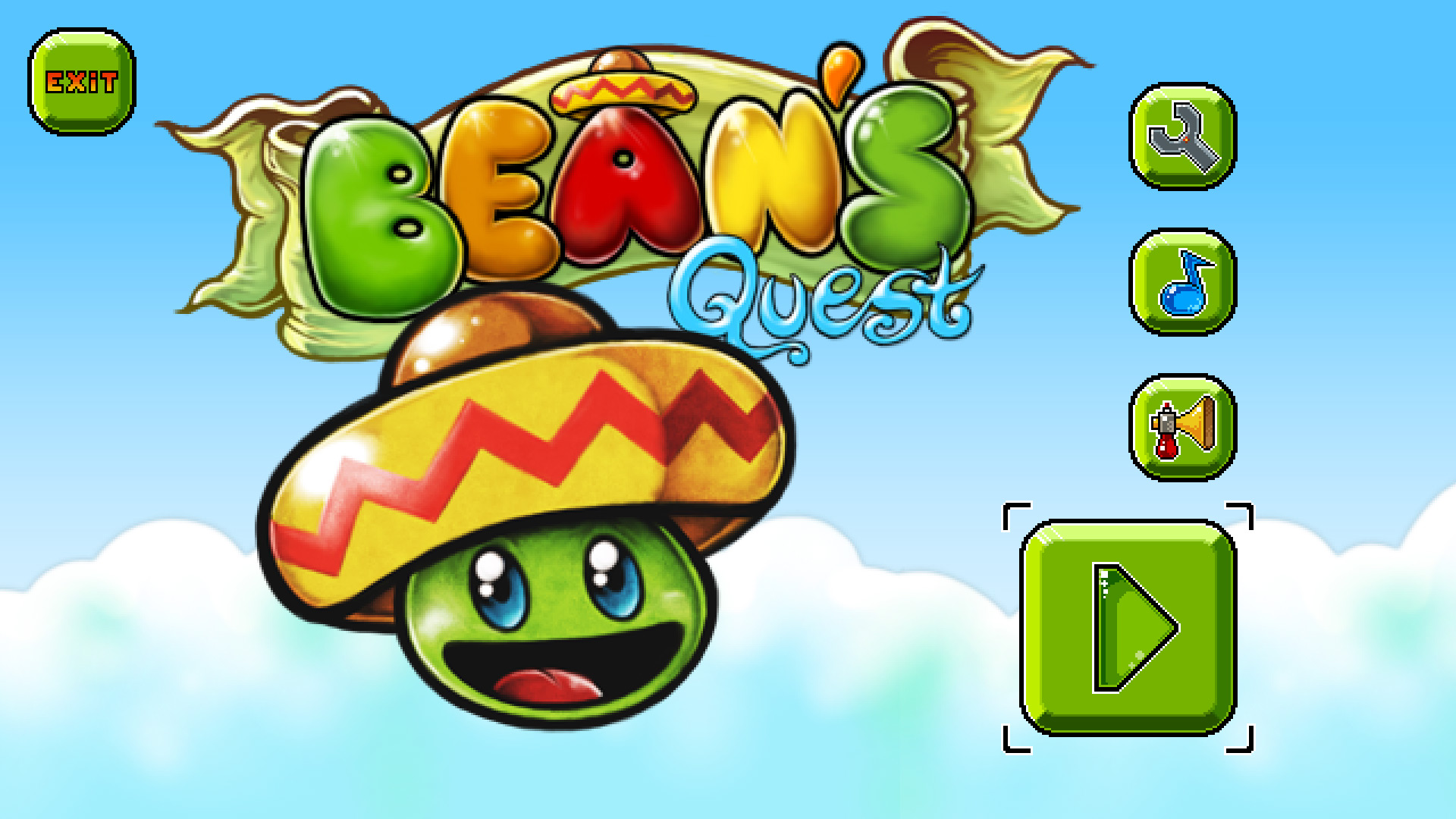
I’ve always had strong reservations about smart phone gaming. Not because I believe gaming isn’t suited to the platform. Quite the contrary, I adore the enhancements touch controls can bring to traditional input devices. No, the issue is the manner in which so many developers adopt touch controls. That is to say, they do so recklessly. Many developers deem it sufficient to take an existing gameplay formula, popular on other platforms using other control peripherals, and attempt to squeeze and skew the design to suit a touch control interface. More often than not, this philosophy results in awful analogue stick and button emulation on a touch surface that has no real buttons of it’s own, and thus no tactile feedback.
For any game demanding precision, this is a problem. A big one. Trying to quickly aim a weapon at a distant enemy via a flat surface ‘analogue stick’ is more frustrating than it’s worth. And platformers? Try making pin-point jumps without any real buttons. There’s a reason Team Meat is completely redesigning Super Meat Boyfor iOS devices: because developing precise button-like controls without any real buttons at all is a fools errand, and makes for a miserable gaming experience.
But every once in awhile a developer gets it right. The developer looks a the pros and cons of a touch screen interface, and develops a game that caters to the system’s best qualities while avoiding its worst.
Enter Bean’s Quest, for both Android and iOS.
Imagine if Mario never stopped jumping. Like, he was hopped up (pun intended) on goofballs and just kept jumping, jumping, and jumping. Constantly, and beyond your control. That is, on a basic level, exactly whatBean’s Quest is all about. In this retro styled side scrolling platformer, you play as a sombrero topped Mexican jumping bean, and as implied, you can’t stop jumping. This fundamental defines Bean’s Quest, both as a cornerstone of gameplay, and restrictions bound to the player. And it is, on both accounts, a good thing.
Though at first the repetitious, uncontrolled jumping may seem like a burden, it quickly becomes evident how necessary this design was to keep the game enjoyable on an touch screen. Trying to juggle a minimum of three functions in a side-scroller (left, right, and jump) without any buttons would have been an ordeal. Instead, with the jump function automated, all the player has to control is movement left and right. And doing so is as easy as tapping the left and right sides of the screen. No buttons, no bounding boxes, just a single screen divided in half, a press of the thumb or finger at any point on either side leading the bouncing bean in that direction.
By minimising controls and functions, Bean’s Quest avoids all the frustrations many touch screen games have with cumbersome button emulation, while also reducing the learning curve. So easy is it to controlBean’s Quest that the on-screen ‘d-pad’ icons, that inform players of their obvious lefts and rights, can be disabled without any negative impact on the experience. This is, in a nut shell, a simple one or two touch game, and is all the better for it.
Don’t be fooled, automated functions do not necessarily equate to simplistic gameplay. Bean’s Quest is designed entirely around the automatic jumping, avoiding the greater control of other platforms to become an experience almost exclusively about momentum and rhythm. Early on, Bean’s Quest is hard to differentiate from other platformers. Static environment layouts with a handful of enemies that could be found anywhere else in the genre. But quickly the game introduces springboards, moving platforms, spike pits and other environment hazards, each world with it’s own unique and interesting gimmicks, that properly realise the game’s design.
And the design is surprisingly challenging. Unlike other platformers, where control over jumping guarantees a safe landing, the continuous jumps of Bean’s Quest encourages players to keep on the move. That moving platform you just landed on? Yeah, you’re back in the air again, trying to re-land as it shifts position, or make a longer jump to an almost out-of-reach ledge. Thanks to the aforementioned simplicity of the controls, this challenge is rarely a frustrating one. There’s a fundamental skill system here, where every missed jump and poor landing is entirely at the fault of the player. Rapid checkpointing and the absence of a redundant lives system give way to Super Meat Boy-esque addictive trial-and-error play sessions, quickly putting players back in the action to retry devious platforming challenges.
Further countering what could be frustrating design, Bean’s Quest offers a nice balance of objectives to cater to both casual players and platformer aficionados. Those that like to keep it simple can aim to simply complete a stage, making their way through obstacles to the final end-level bounce pad. Those after more demanding gameplay can aim to meet three additional stage criteria: collect all gems, find and reach the hidden axolotl, or beat the stage under a set jump par count. Each of these challenges can be completed individually, and each demands a different set of skills from the player, from meticulous searching for all collectables, to making every jump count as you speed through stages. Given the game has several worlds and a good helping of stages in each, those planning to do ‘everything’ will be pleased to discover Bean’s Quest is surprisingly packed in content.
Stylistically, like many indy platformers Bean’s Quest calls upon pixel art and chip tunes, and it looks and sounds great. The colourful pixel art is easy on the eyes, particularly in helping differentiate characters and surfaces from scrolling backgrounds, and the simplicity guarantees excellent performance and framerate on budget line smart phones. The graphical styles of each world keep them looking different enough, and Bean himself has plenty of charm, though many of the enemies are a bit forgettable by comparison. Recycled assets are not a problem, keeping consistency with hazard presentation from early stages to tonally different latter stages.
Backing every stage is an upbeat, chip-tune soundtrack composed of fast tempo beats that sound suitably Mexican and Spanish. There’s potential for tracks to grow repetitive as players continually die on more challenging stages, but giving each world it’s own unique theme keeps the mix interesting enough. Besides, if you’ve reached that point, it’s probably a sign to pack it in and take a break.
Sound effects are pretty basic beeps and bloops. Nothing particularly memorable, though perhaps this as good thing, especially given Bean’s ‘booooiiing’ sound bite that plays every time he launches from a surface. Minimalism was the directive here, and it was a wise decision.
As I said, I have reservations about a lot of smart phones games. So, I was pleasantly surprised to discover that Bean’s Quest warrants none. It’s a simple game, but a smart one, designed to fit touch screen devices like a glove. And though the concept itself, that being an indy, pixel art platformer, is hardly anything original, it is one of the better examples of how such a game like it should be conceived on a platform so very different from the genre’s origins.
With an impressive amount of content and a great balance of challenge and skill, it’s difficult not to recommend Bean’s Quest as one of more essential games on both the iOS and Android devices. Especially since it wont cost you more than AU$3.00. That’s a lot of bean for your buck.
Designed for touch screens | Lots of content | Great challenge
Safe presentation | No post-modern Nietzsche philosophy

